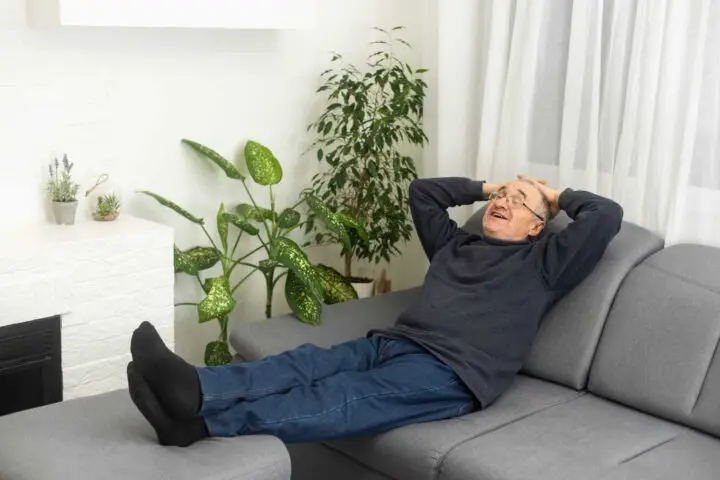
Your skin changes as you grow older. It grows thinner, drier, and less elastic. However, there are many simple things you can do to keep your skin looking and feeling as healthy as possible.
Key Takeaways
If you’re wondering why your skin is less supple than it used to be, there are many possible causes. That includes certain medical conditions and natural physical changes, like your glands slowing down. Lifestyle plays a part too, especially if you sunbathe or smoke cigarettes.
Caring for Dry Skin
Xeroderma and xerosis are the medical terms for dry skin. Dry skin can make you uncomfortable and self-conscious and may cause infections if left untreated.
Try these tips to keep more moisture in your skin:
Avoid hot water
Long hot baths dry out your skin. Try soaking briefly in warm water instead. Wear rubber gloves while hand washing dishes. This will protect your hands from the harsh chemicals in dishwashing detergent, which can strip away the natural oils and moisture from your skin. Additionally, it is recommended to use mild and moisturizing soap when washing your hands or body.

Dry off gently
Older skin requires a light touch. Pat yourself dry with a soft towel and leave your skin a little damp. Use your fingers to wash instead of stiff brushes or sponges. This will help prevent excess friction and irritation on your skin. As you gently dry off, take a moment to appreciate the sensation of the soft towel against your body, allowing yourself to relax and unwind.
Leaving your skin slightly damp after showering is beneficial for older skin as it helps lock in moisture. This can be especially helpful if you have dry or sensitive skin. The slight dampness acts as a natural barrier, preventing moisture loss and keeping your skin hydrated.
Moisturize Frequently
Apply moisturizer at least once a day, especially after bathing. If your current brands are inadequate, ask your doctor for recommendations. You may need a different formula, or you may want to use larger amounts. Using a moisturizer regularly is crucial for maintaining healthy and hydrated skin. It helps to lock in moisture, preventing dryness and irritation. Make it a habit to apply moisturizer at least once a day, preferably after bathing when your skin is most receptive.
If you find that your current moisturizers are not providing the desired results, don’t hesitate to consult with your doctor or dermatologist. They can recommend specific brands or products tailored to your skin’s needs.
Stay hydrated
Drink water throughout the day. Your sense of thirst declines with age, so it may benefit you to create other reminders to help you stay on track. One way to ensure you stay hydrated is to carry a water bottle with you wherever you go. By keeping it within reach, you’ll be more likely to take regular sips throughout the day. Additionally, setting reminders on your phone or computer can help prompt you to hydrate at specific intervals.
Another helpful tip is to infuse your water with fruits or herbs for added flavor and motivation.
Avoid Scratching
Try to keep your hands off of irritated skin to avoid infections. If you’re itchy, use cold compresses or shop for ointments at your local drug store. These ointments are specifically designed to provide relief from itching and help soothe irritated skin. Look for products that contain ingredients like hydrocortisone, calamine, or aloe vera, as these can effectively reduce itching and inflammation.
In addition to using ointments, cold compresses can be a great temporary solution for relieving itchiness. Wrap some ice cubes in a clean cloth or towel and gently press it against the affected area.
Humidify your home

Indoor heating and air conditioning dry the air. Run a humidifier if necessary to bring the relative humidity back to 30 to 50 percent.
Preventing Skin Cancer
It’s a myth that most sun damage occurs before the age of 18. You can reduce your risk of skin cancer even in your senior years. Regular screenings and self-examinations will also help you to receive prompt treatment and increase your odds of recovering from skin cancer. Use these strategies:
Seek Shade
Just 10 minutes of sun can help you get the vitamin D your body needs for strong bones and immune functions. Otherwise limit your exposure and forget about tanning beds.
Apply Sunscreen
When you are outdoors for longer periods, apply a broad-spectrum sunscreen with an SPF of at least 15. Give yourself a second helping if you swim or perspire. Protective clothing helps too.
Inspect Yourself
Most skin cancers appear after the age of 50. Perform self-examinations in front of a mirror at least once a month. Here’s how to do it:
- Set aside dedicated time: Find a quiet and well-lit area where you can perform your skin inspection without any distractions. Ideally, choose a room with a full-length mirror and good lighting to ensure thorough examination.
- Examine your entire body: Start with the head and work your way down, examining every nook and cranny of your body. Pay close attention to areas that are frequently exposed to the sun, such as the face, neck, ears, arms, hands, legs, and feet. Don’t forget to look at the spaces between your fingers and toes, as well as your palms and soles.
- Use a handheld mirror: For areas that are hard to see, like your back or the back of your neck, use a handheld mirror or ask someone for assistance. This will enable you to inspect every part of your body thoroughly.
- Check for asymmetry: Pay attention to any mole, birthmark, or spot that appears asymmetrical. Irregular shapes are a potential indicator of skin cancer.
- Observe changes in color and size: Take note of any moles or spots that have changed in color, size, or shape. Skin cancer lesions often exhibit variations in pigment and can evolve over time.
- Look for irregular borders: Examine the borders of your moles closely. Skin cancer lesions often have uneven, scalloped, or blurred edges, unlike regular moles that usually have smooth and well-defined borders.
- Inspect for evolution: Keep track of any changes in your moles or spots over a period of time. Monitor their growth, as skin cancer lesions often show progressive changes in size and texture.
- Pay attention to new growths: Take notice of any new moles or spots that have appeared recently. The sudden appearance of a mole or spot is worth investigating, as it could be an indication of skin cancer.
- Don’t overlook non-pigmented spots: Skin cancer can also present as non-pigmented spots, such as red patches, sores that don’t heal, or rough and scaly patches. These signs should not be ignored during your examination.
- Consult a dermatologist: If you notice any suspicious changes or are unsure about a particular spot, consult a dermatologist. They are experts in skin health and can conduct a thorough examination, perform biopsies if necessary, and provide appropriate guidance for treatment or further investigation.
Remember, regular self-skin examinations play a crucial role in the early detection of skin cancer. By performing these checks diligently, you can take proactive steps toward maintaining the health of your skin and overall well-being.
Ask your doctor what screening schedule you need for your individual circumstances.
Other Tips for Senior Skin Care

Keep these helpful techniques in mind:
Reduce Wrinkles
Crow’s feet and laugh lines are harmless. If wrinkles and age spots make you uncomfortable, explore well-established options. Some products advertised online or on TV are a waste of money and may even harm your skin.
Eliminate Irritations
Make life easier for your epidermis. Wear natural fibers. Avoid fragrances and harsh chemicals as much as possible.
Heal Faster
Older adults bruise more easily, and injuries take longer to heal. Be extra careful about keeping wounds clean and properly dressed. Managing stress, eating a healthy diet, and getting adequate rest may speed up recovery as well.
Ask your doctor
Skin issues can sometimes be a symptom of underlying conditions such as diabetes or arthritis. Talk with your doctor about your concerns, especially if you notice sudden changes in your skin.
Summing Up
Seniors have special skin care needs. The more you understand about the aging process, the more you can do to prevent cancer and infections and keep your skin in top shape.
About The Author: Otto Wright is a wet shaver and freelance author.
